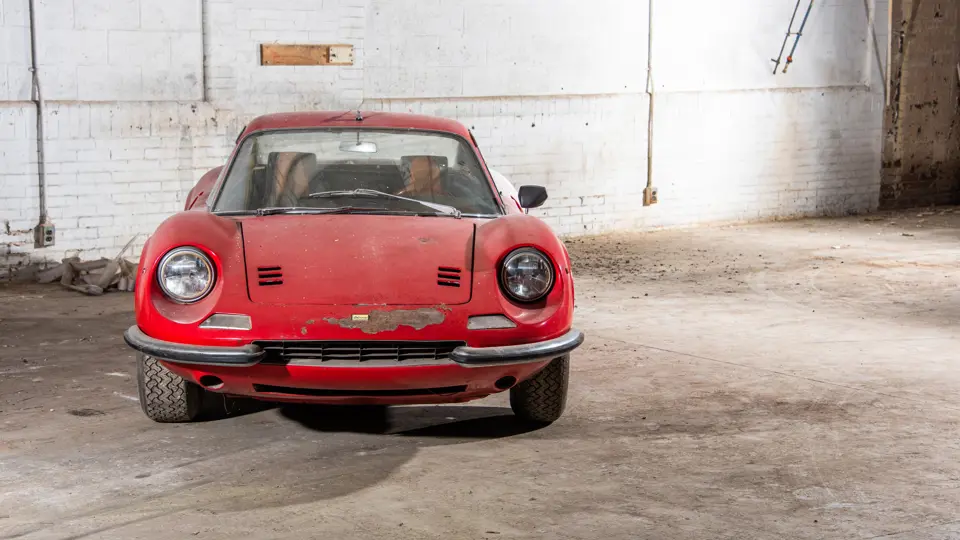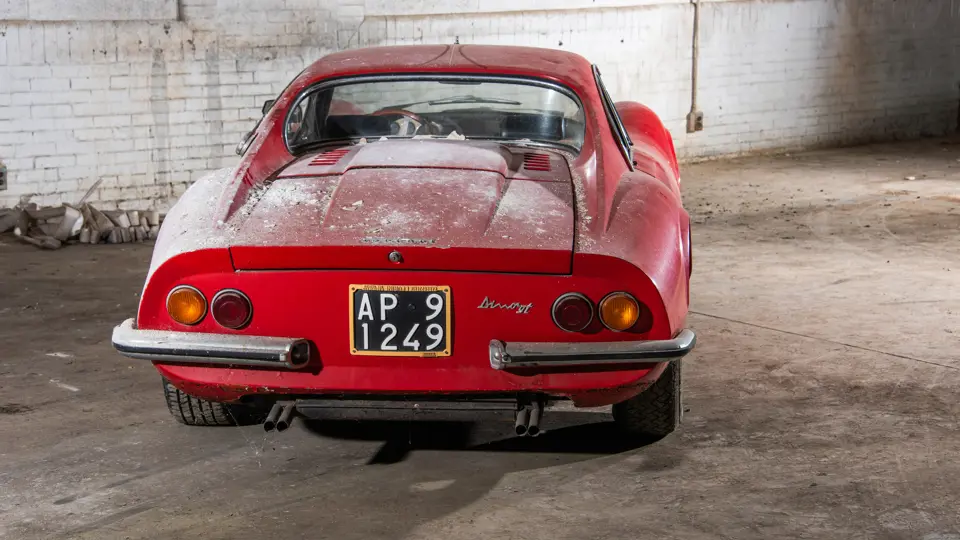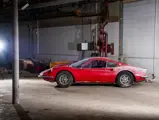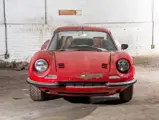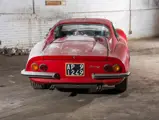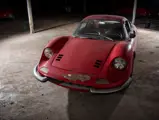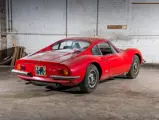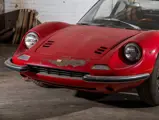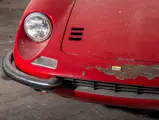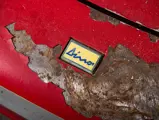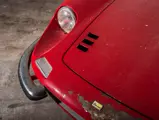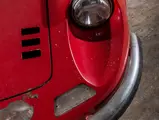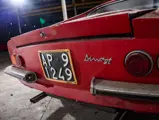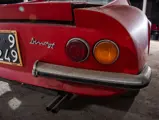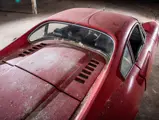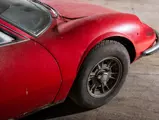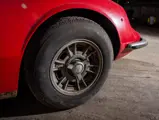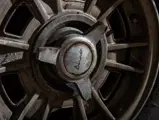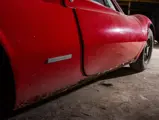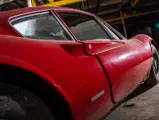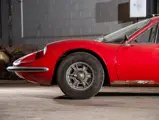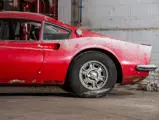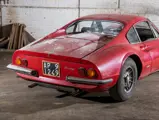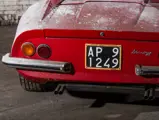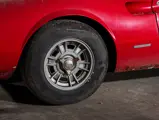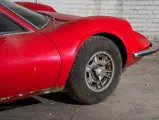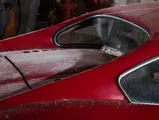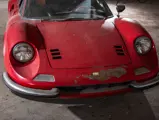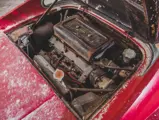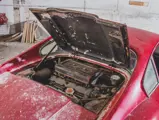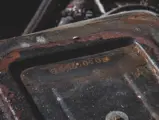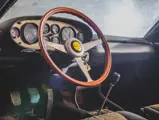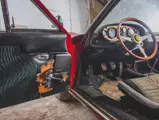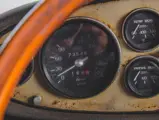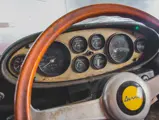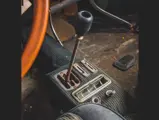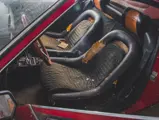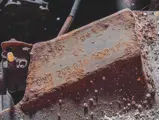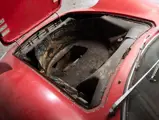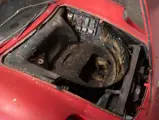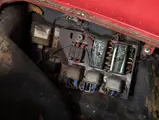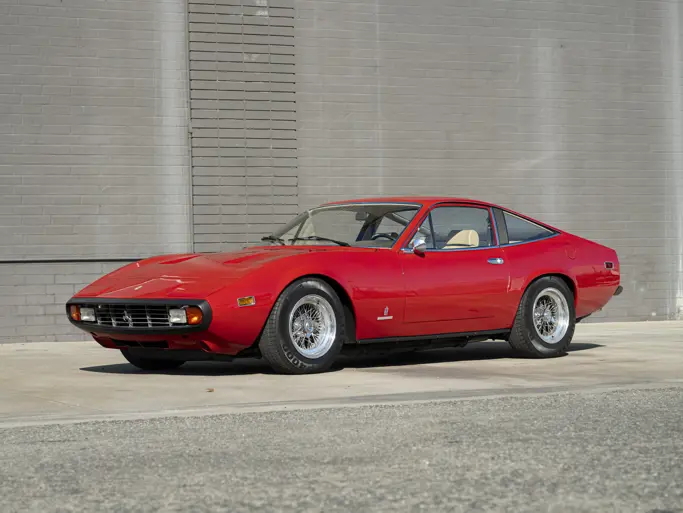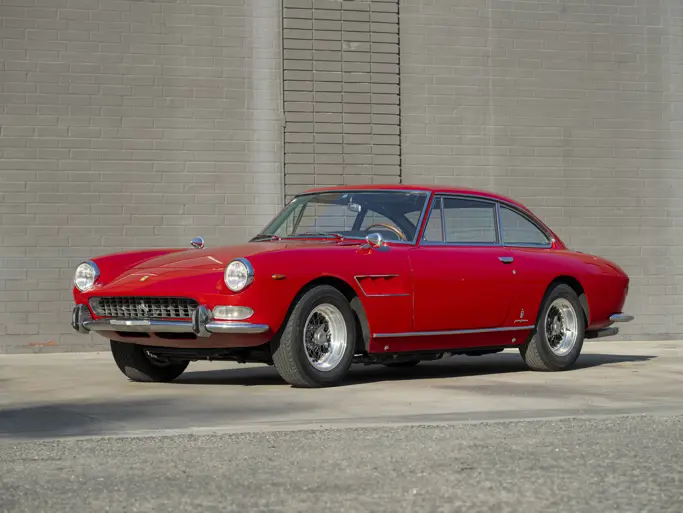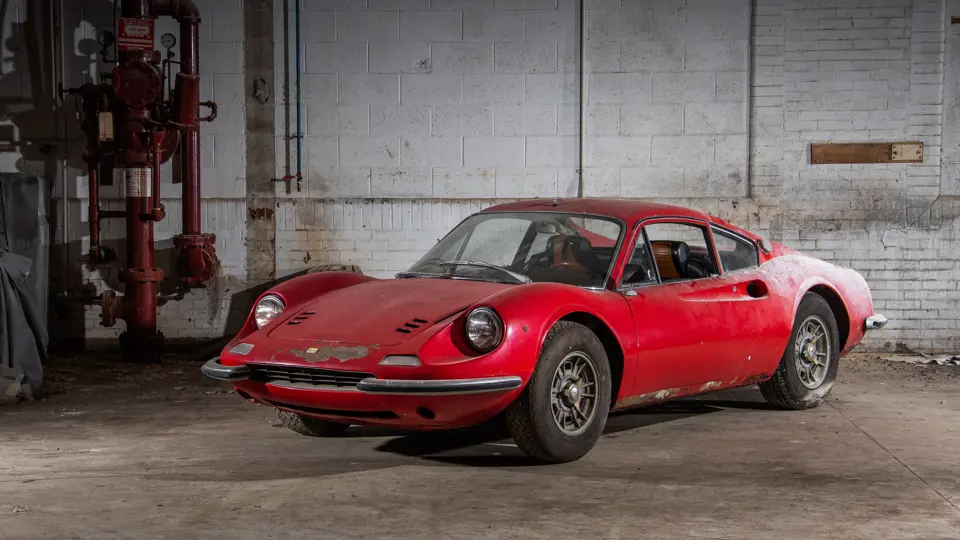
1968 Ferrari Dino 206 GT by Scaglietti
{{lr.item.text}}
$456,000 USD | Sold
Offered from the Lost & Found Collection
{{bidding.lot.reserveStatusFormatted}}
- Retains numbers-matching engine and gearbox
- Originally finished in Rosso Dino over a Marrone interior with Panno Grigio cloth inserts
- One of approximately 153 produced with all-aluminum bodywork from 1967 to 1969
- Documented ownership chain from new; includes report by marque historian Marcel Massini
- An excellent candidate for a ground-up restoration
- Ferrari’s first production model with a mid-engine layout and the first to be powered by a V-6
When the first Dino-badged Ferrari made its debut in the mid-1960s, the idea of a junior Ferrari was not a new one. Enzo Ferrari’s eldest son, Dino, had been a passionate proponent of V-6 engines and is credited with designing the marque’s first V-6. Unfortunately, he would never live to see it. Diagnosed with Duchenne muscular dystrophy, Dino Ferrari is said to have worked tirelessly from his hospital bed as the disease ravaged his body. He tragically succumbed to it at 24 years of age in 1956, just one year before the engine premiered to great racing success.
After years of podium finishes with the “junior” engines, Enzo Ferrari, who had long desired a production car to directly challenge Porsche, charged his development team with designing a new car from the ground up, using the principals advanced by his beloved son. The resulting Dino 206 GT was the company’s first production model with a mid-engine layout and the first to be powered by a V-6 engine, with “Dino” proudly cast in each camshaft cover.
In the Dino 206 GT, Ferrari manifested a true driver’s car, combining lightweight, all-aluminum construction—quite advanced for the time—with sublime handling, a sonorous V-6, and timeless styling. Aldo Brovarone and Leonardo Fioravanti’s design vision was brought to life in the workshops of renowned Carrozzeria Scaglietti, where the sumptuous, flowing lines of the Pininfarina draftsmen were formed entirely in alloy, making the 206 GT considerably lighter than the steel coachwork of its 246 GT successor.
His son’s dream come to life, Ferrari saw it only fitting that rather than the revered prancing horse, it would be Dino’s own signature adorning the car’s nose. Today, many Ferrari connoisseurs regard the 206 GT as the more distinctive and important Dino model. It is also surely one of the rarest with around 153 of the hand-built, all-aluminum-bodied 206 GTs produced from 1967 to 1969, after which production shifted to the heavier 246 GT.
The Dino 206 GT offered here completed production on 25 October 1968 and was delivered new to Ferrari dealer Romeo Pedini Auto S.r.l. in Perugia, Italy. It was finished from the factory in Rosso Dino over a Marrone interior with Panno Grigio cloth inserts. It was sold to its first owner, Ugo Bosca, a resident of Assisi, on 6 December 1968. The following July, the 206 GT was sold to its second owner, Paolo Pietro Lattanzi, who resided in Granaro and re-registered the car with the Italian license plate “AP 91249,” which remains affixed to this day. In April 1974, the car was sold to its third owner, Giuseppe Paci, a resident of San Benedetto del Tronto, Italy. In the late 1970s the Dino was with Carrozzeria Leurini, in San Benedetto del Tronto, Italy. A Carrozzeria Leurini registration plate still adorns the rear number plate today. Following this, Walter Medlin would acquire the 206 GT, having it exported to the United States in May of 1977.
Although this 206 GT, now offered from the Lost & Found Collection, does require a comprehensive restoration, it retains its numbers-matching engine and gearbox. Now finished in red over a retrimmed interior, it rides on correct Cromodora wheels and is fitted with its three-spoke steering wheel replete with Dino logo.
Breaking cover for the first time in nearly three decades, this rare Dino 206 GT is offered with documentation, including a previous Italian insurance registration and forms from the 1977 export. It is an excellent candidate for a complete restoration—particularly in its appealing original colors of Rosso Dino over a Marrone and Panno Grigio interior—that would deservedly bring it back to full glory so it can be proudly showcased at events far and wide.




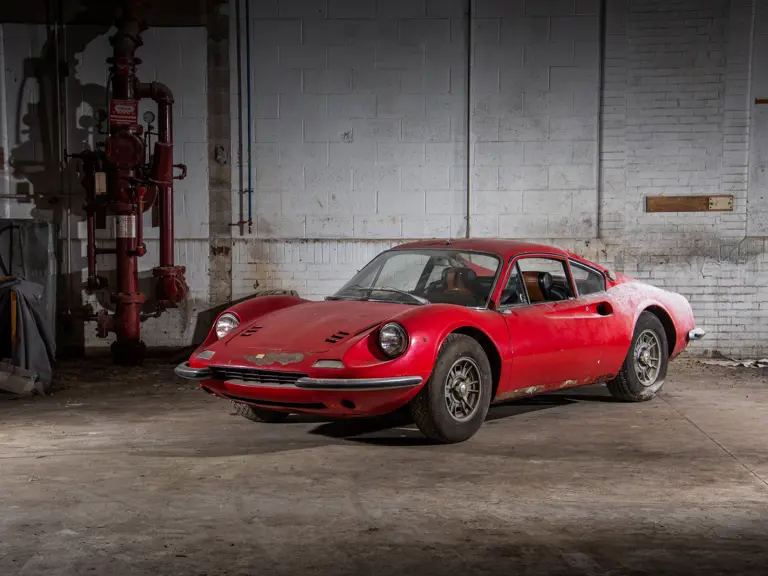
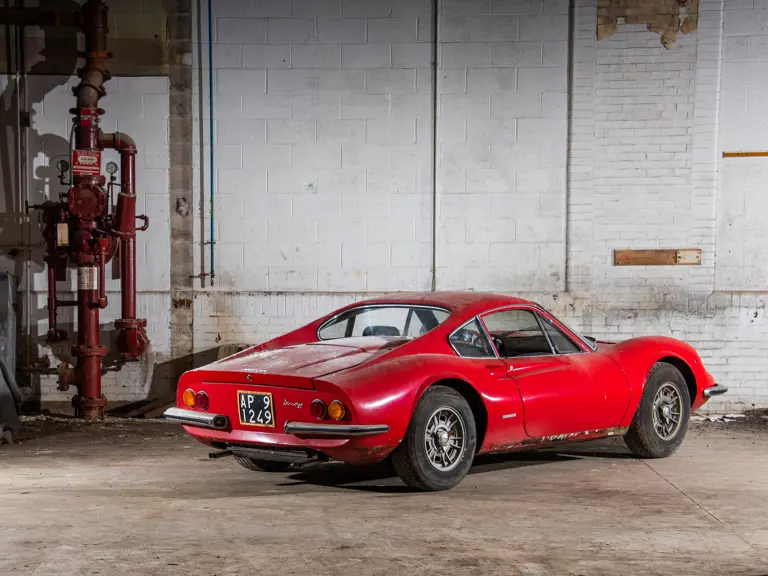
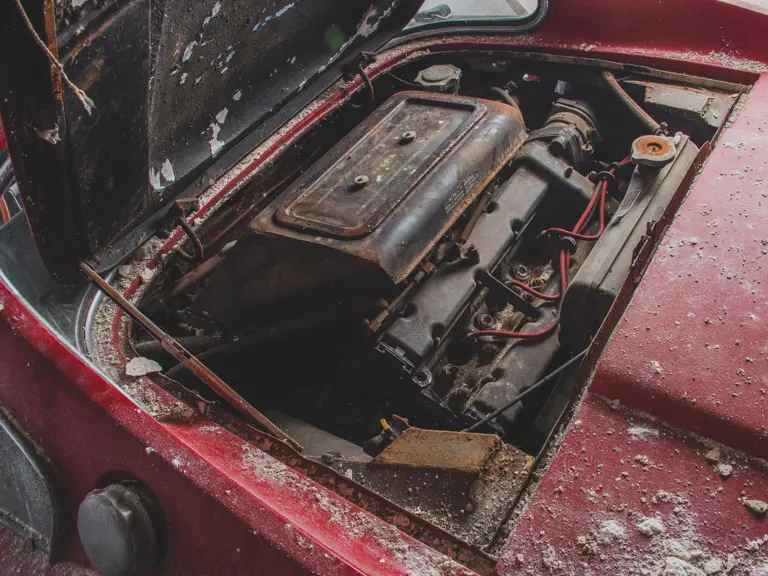
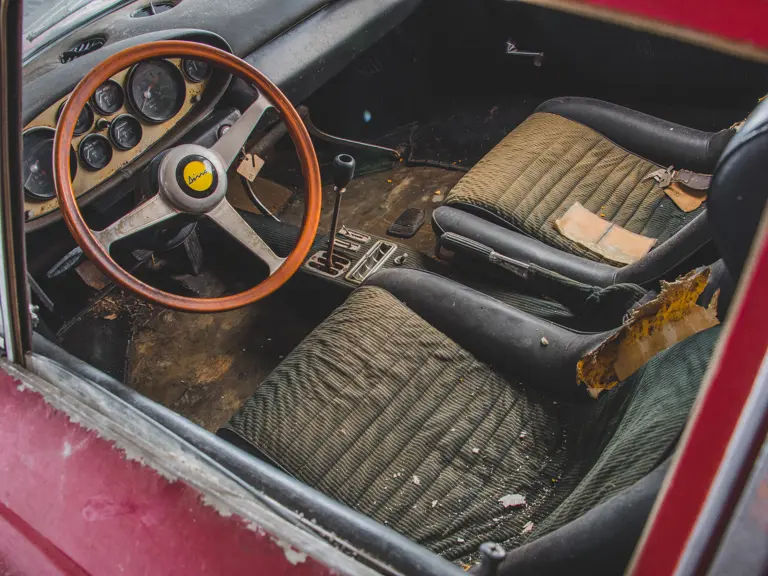
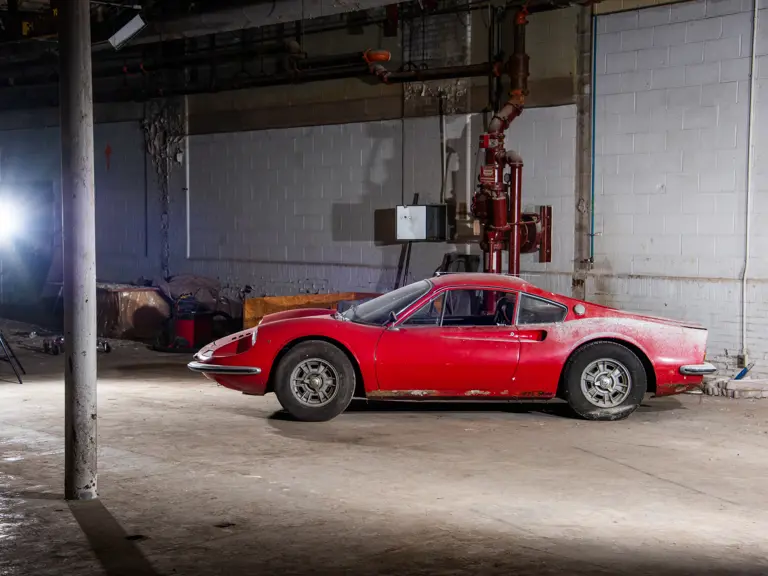


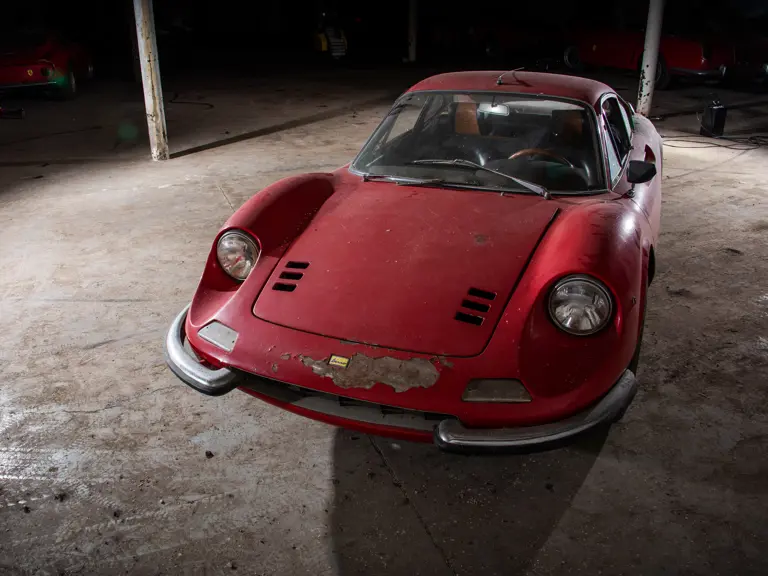


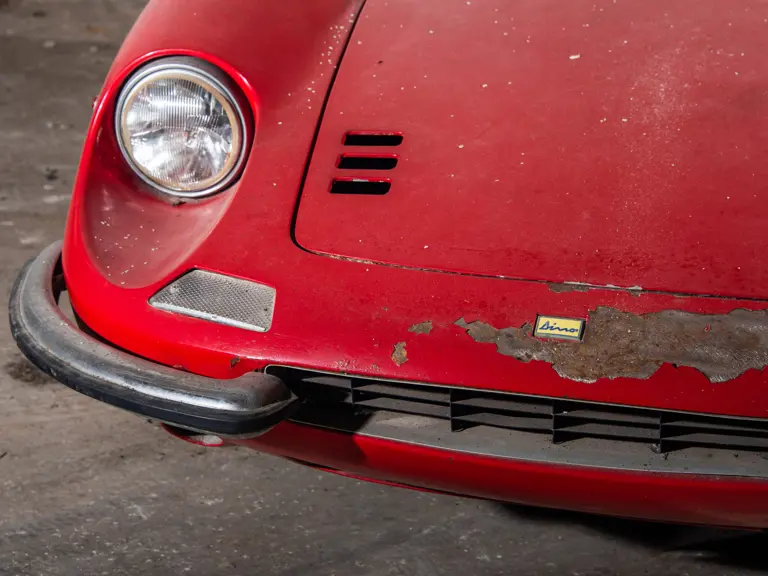
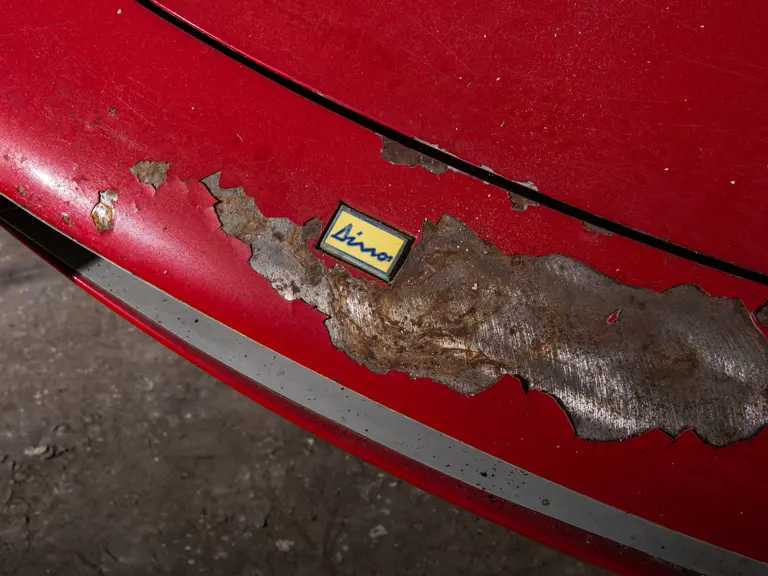

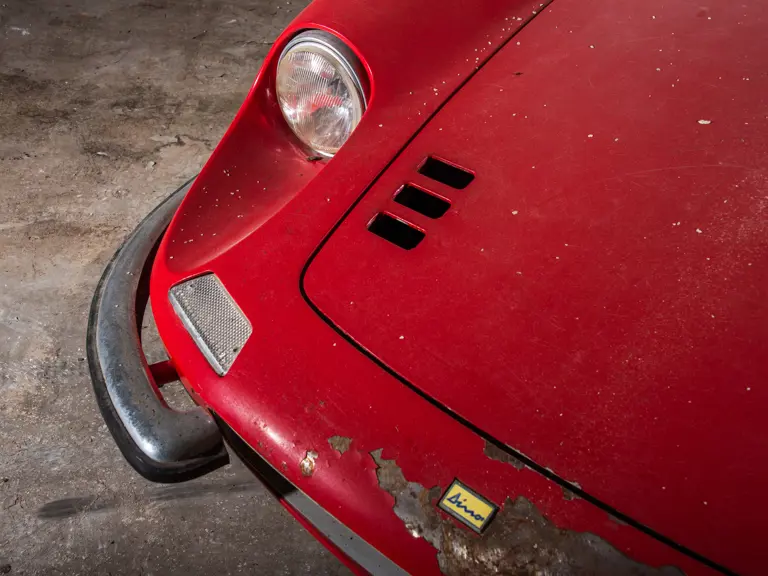
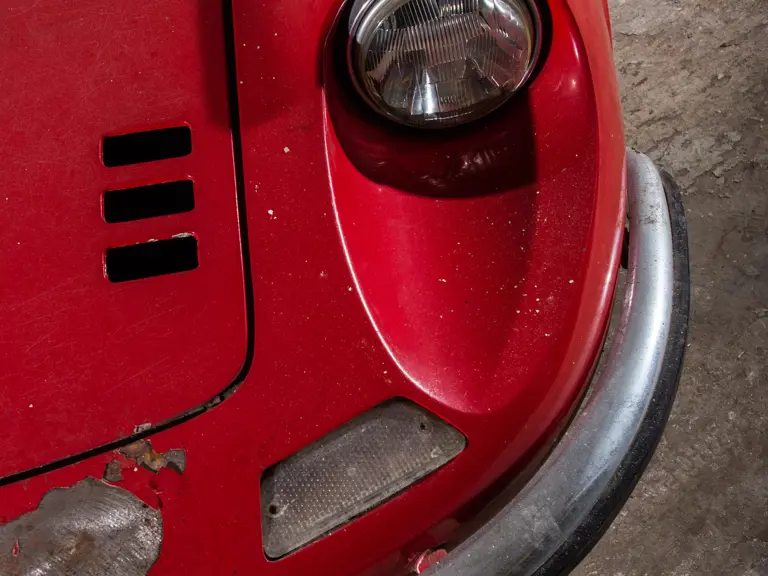
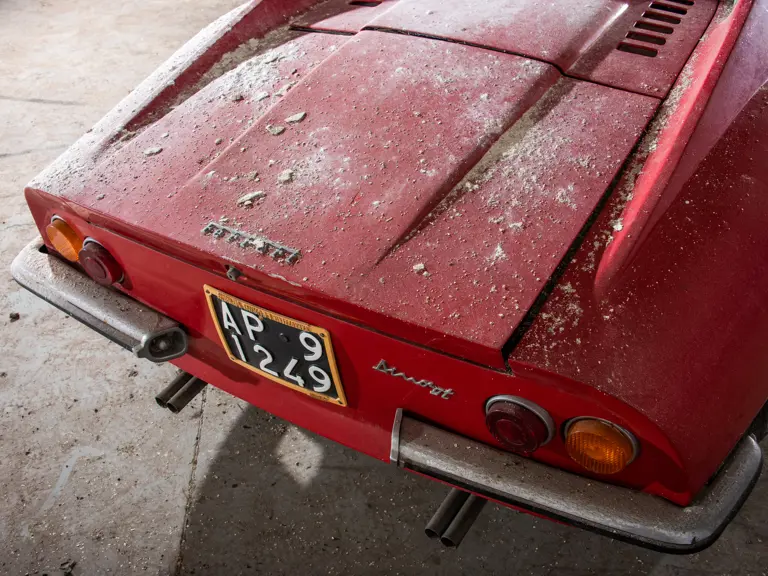

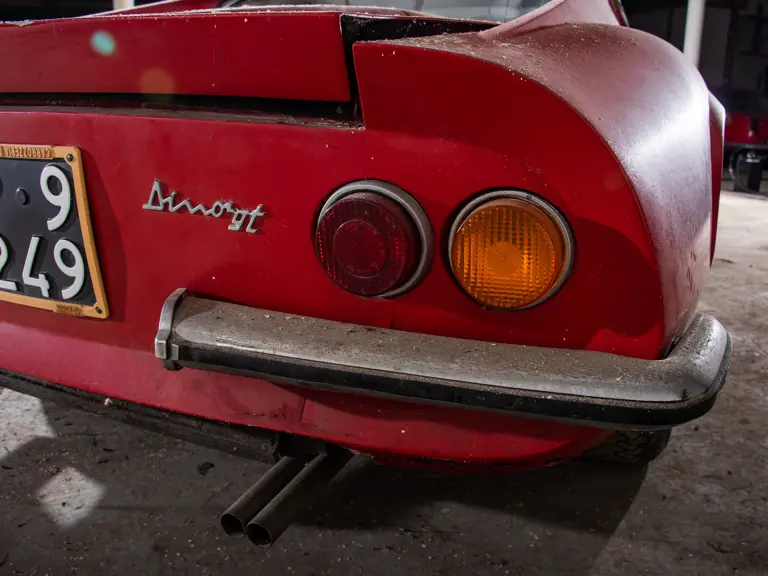
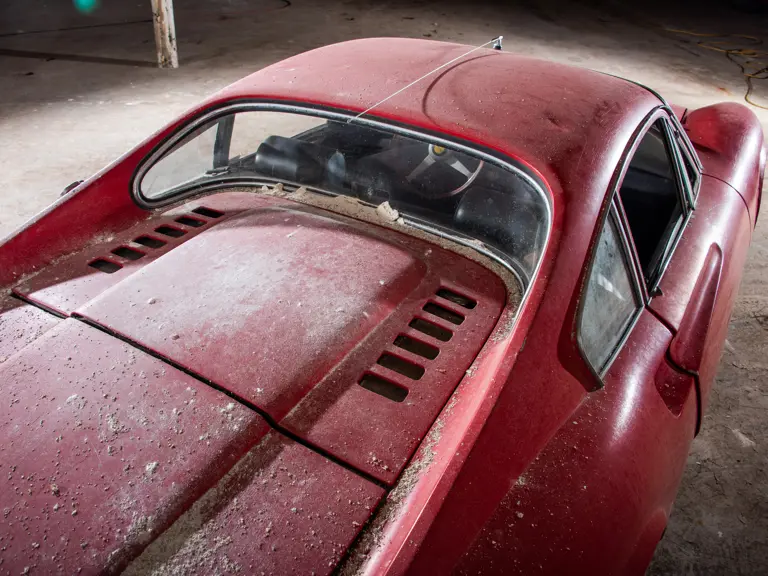

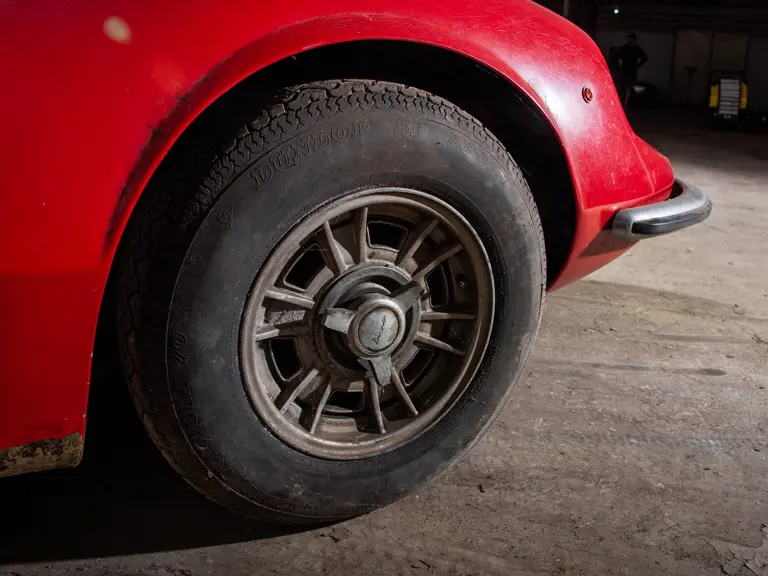
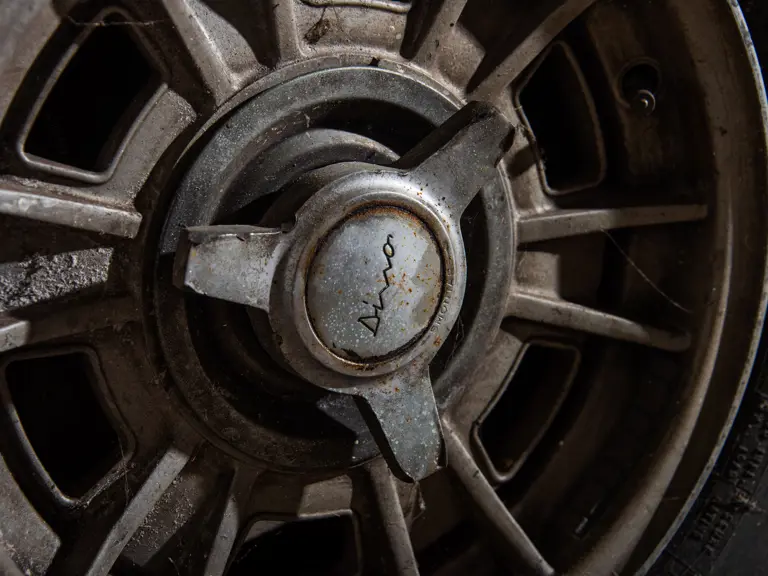
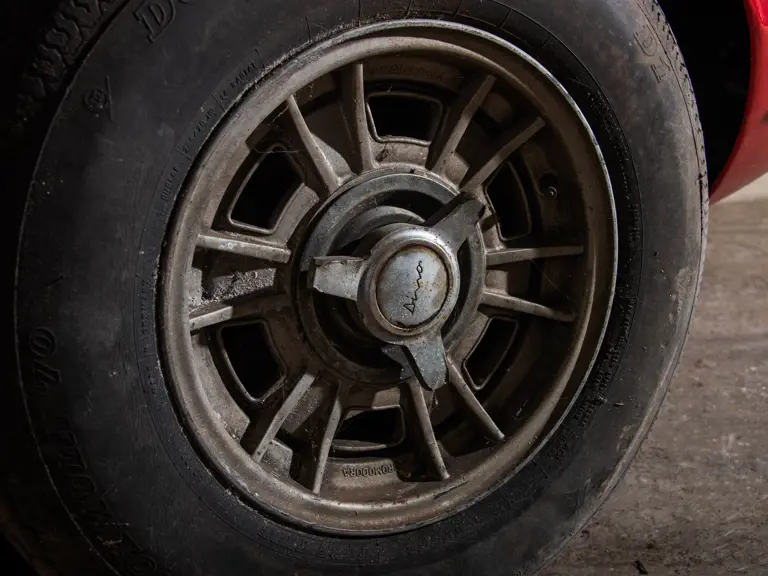
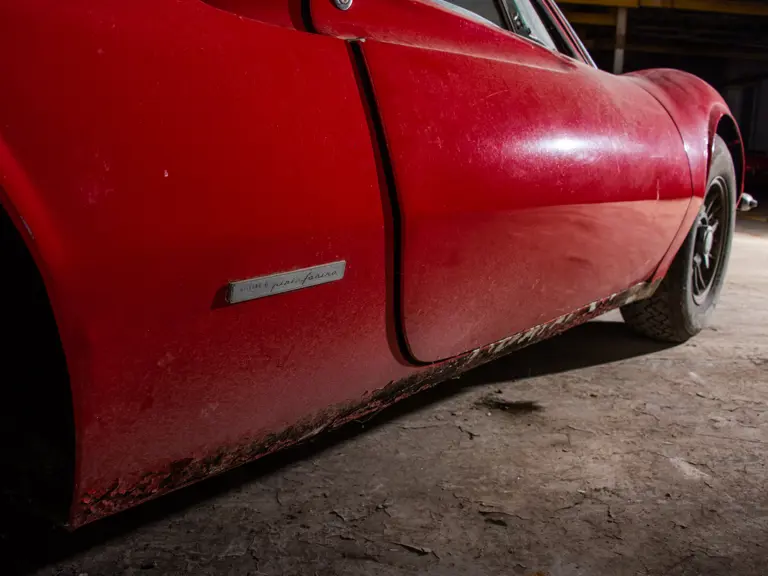

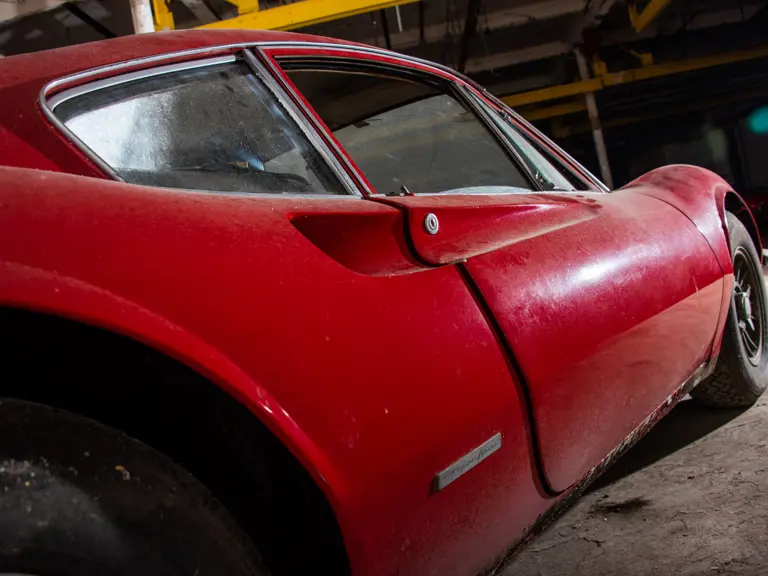
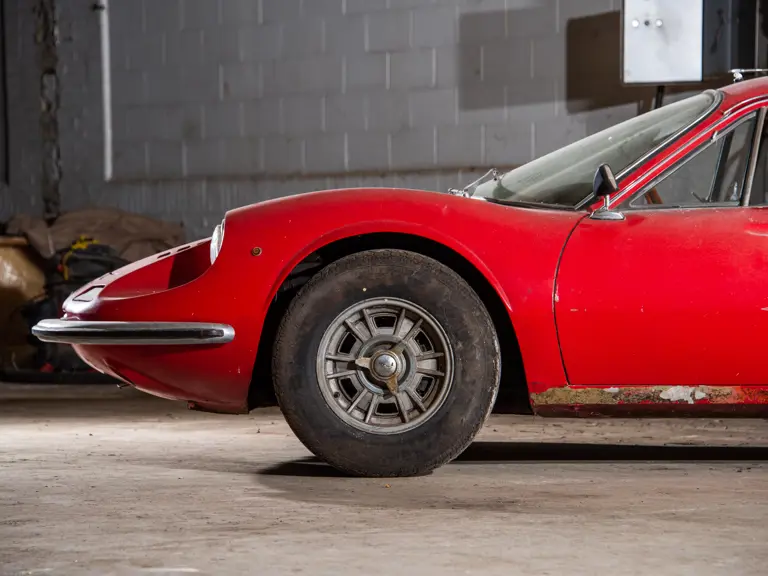
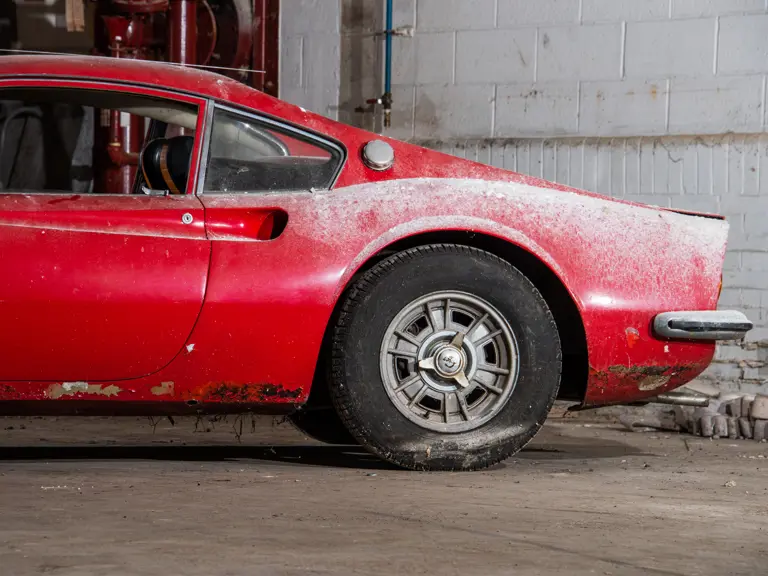
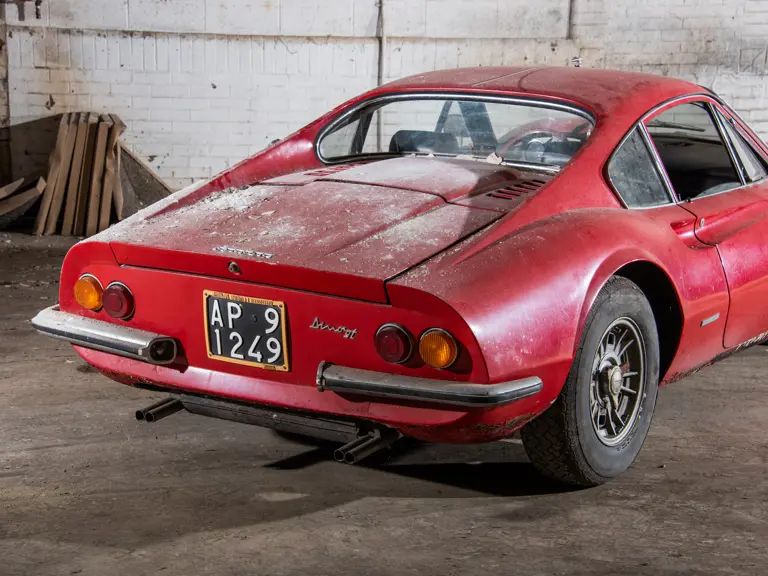
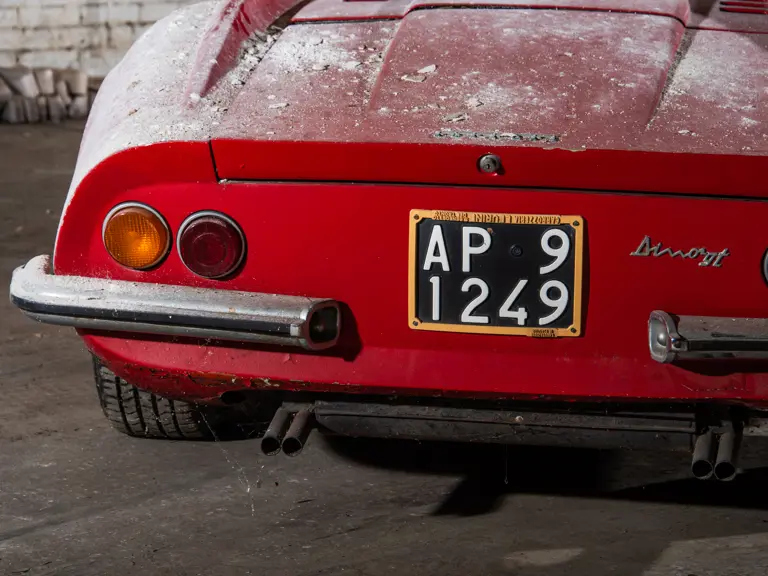
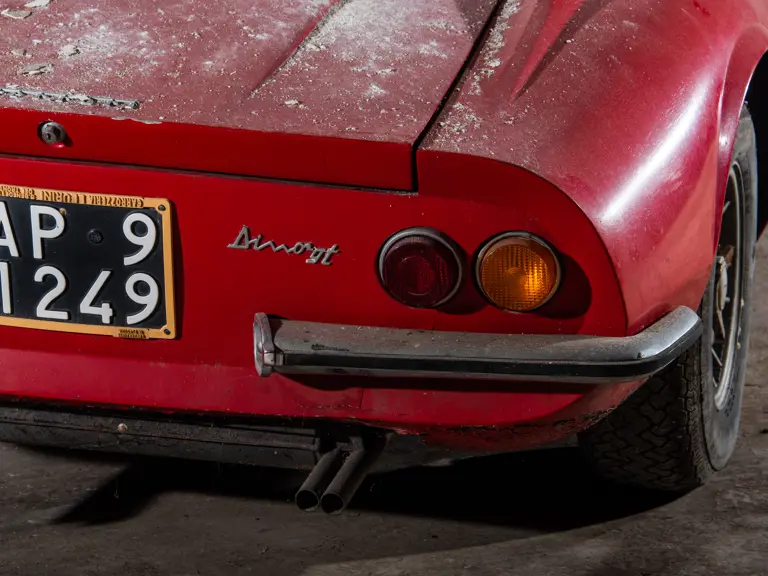

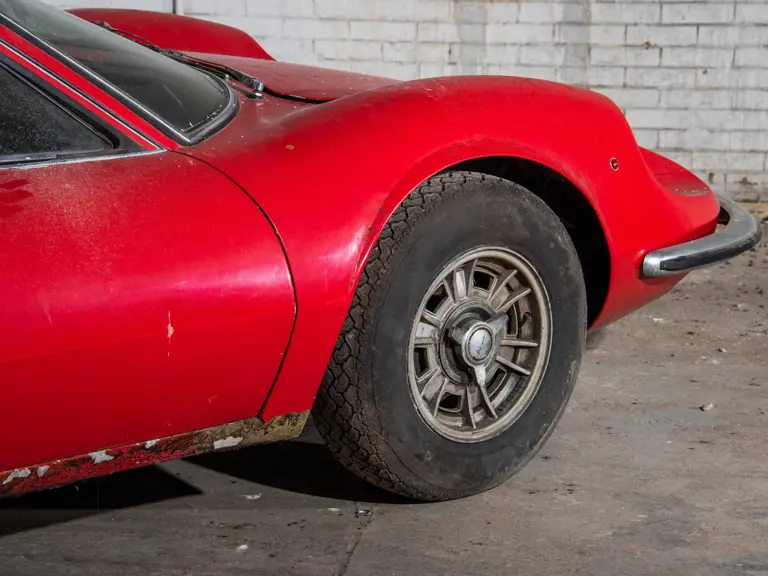
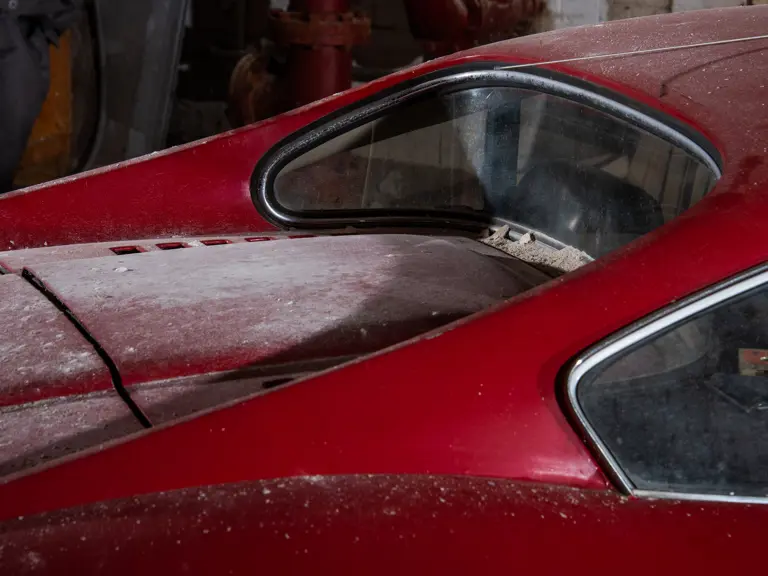

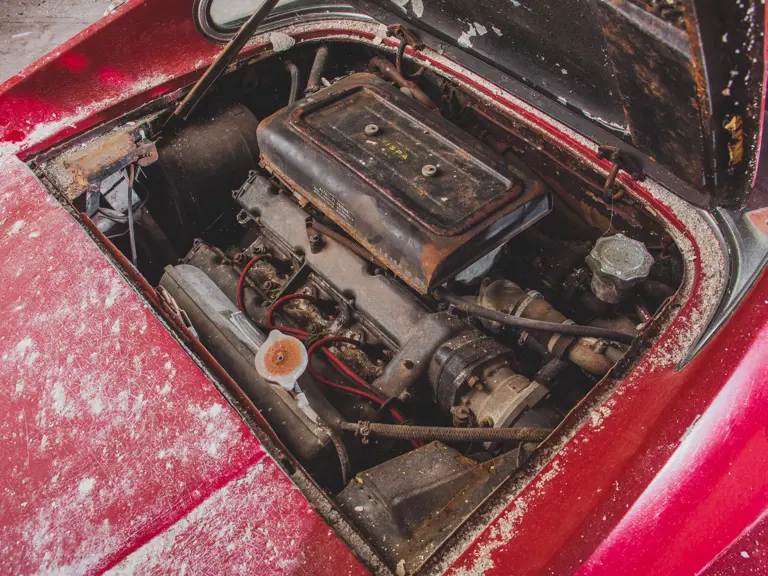
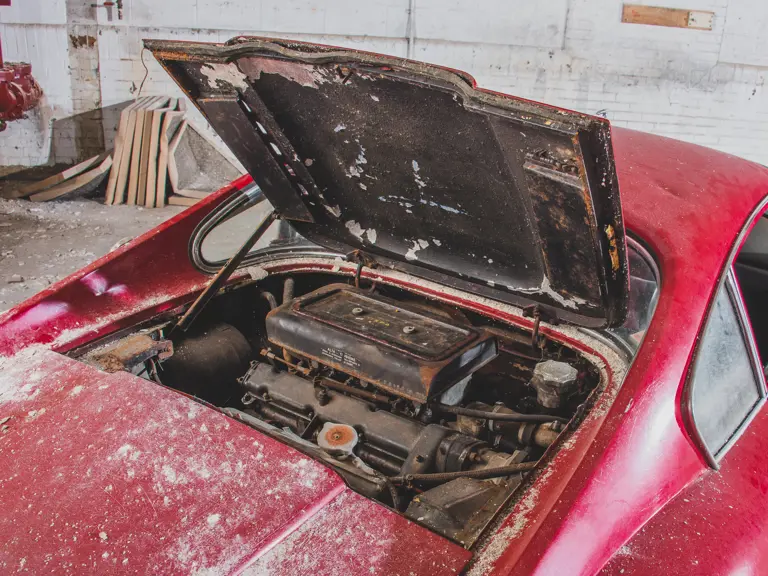
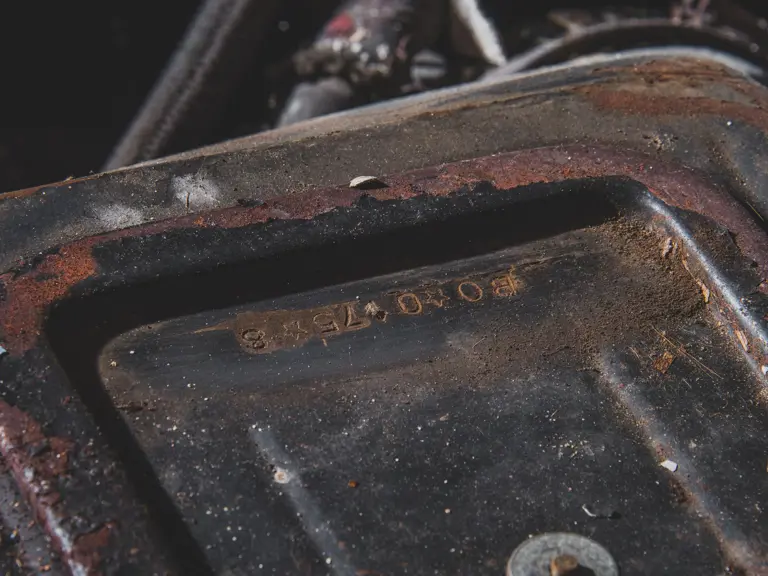
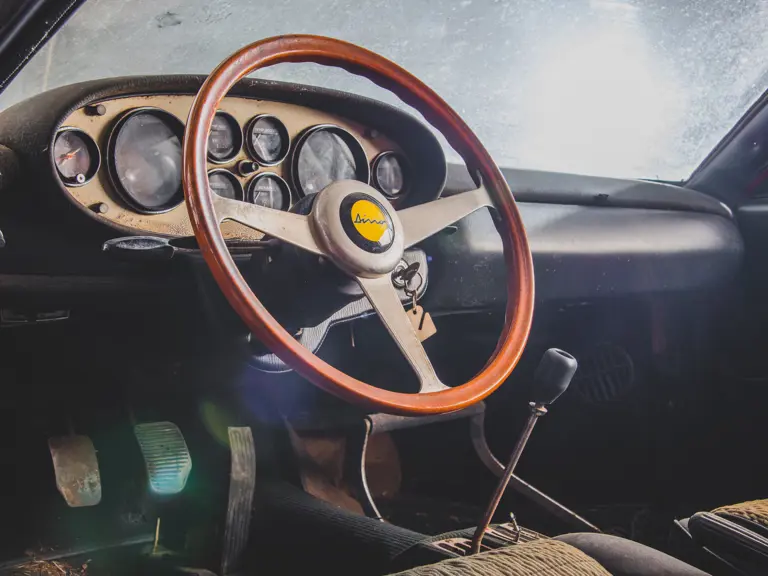

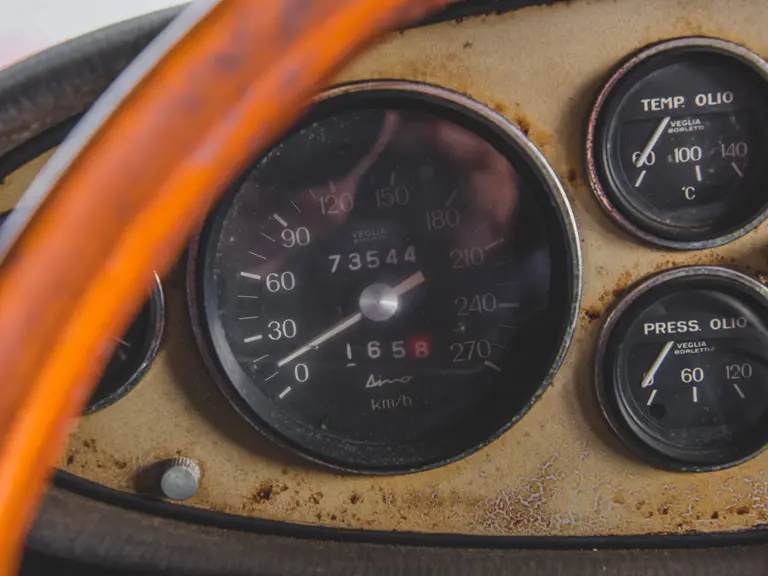
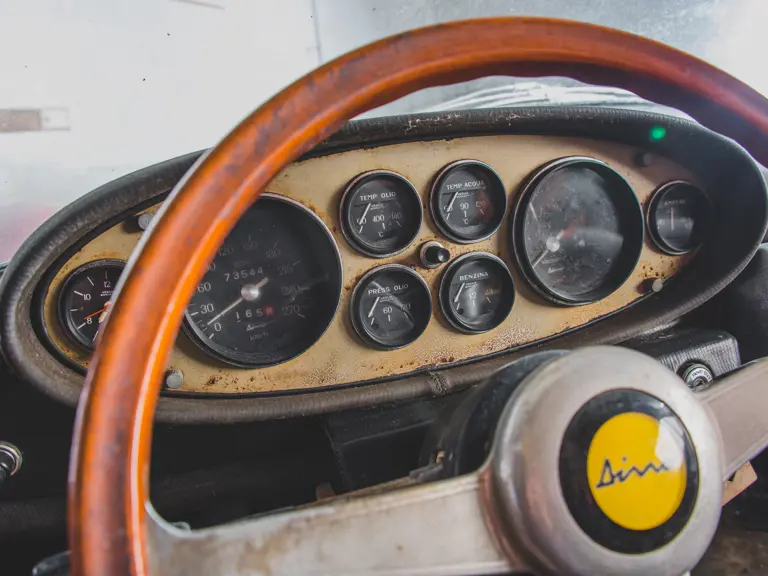
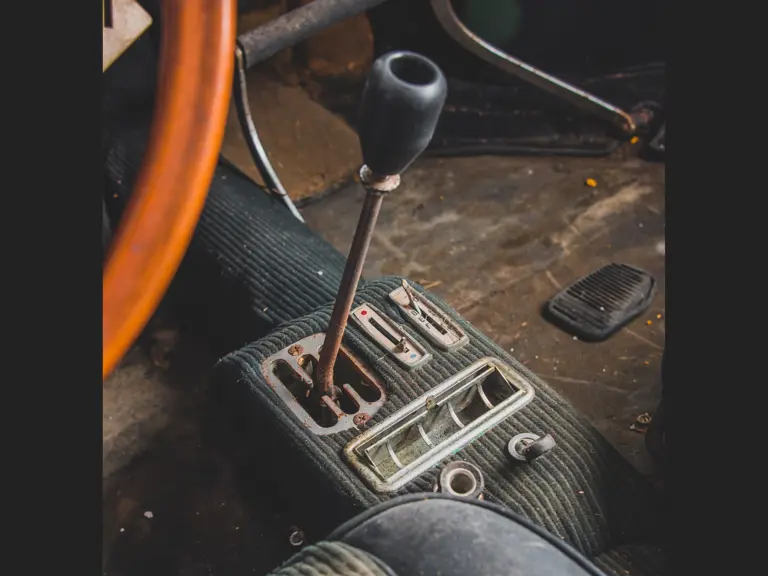

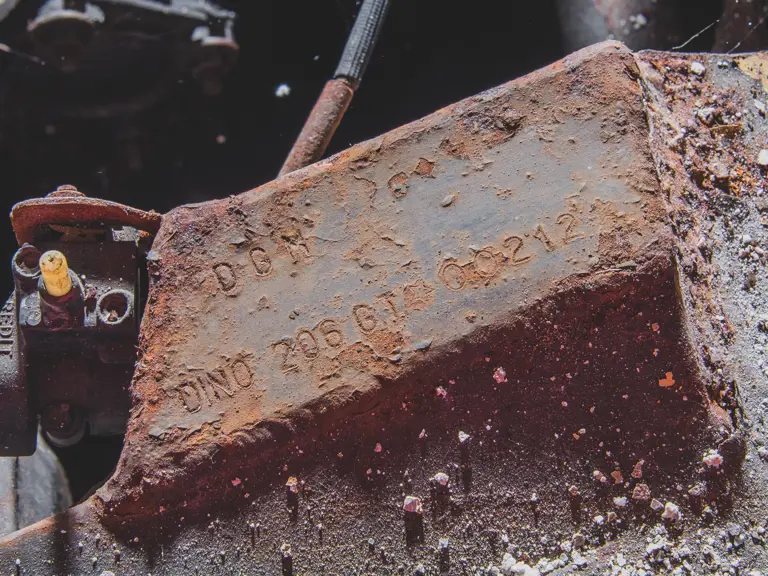
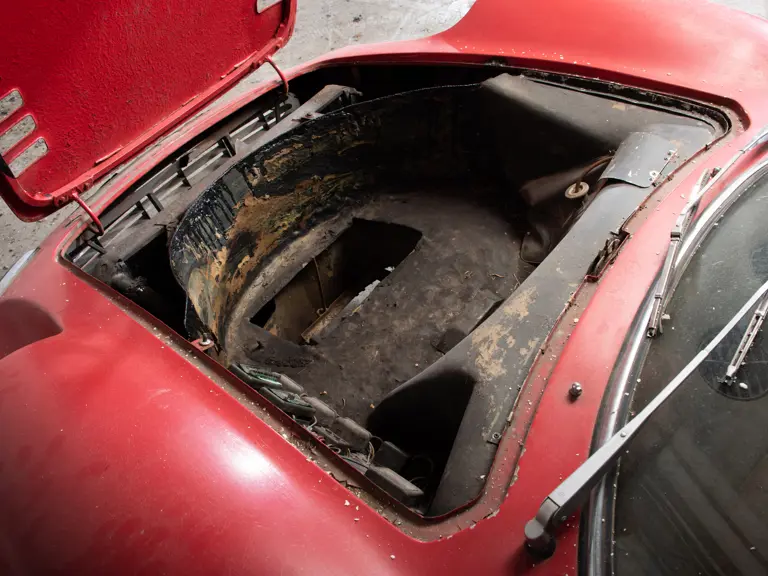

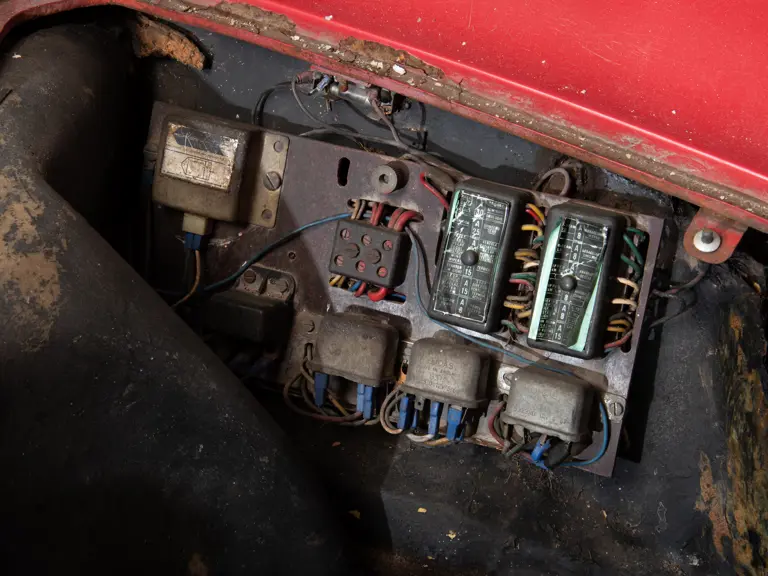
 | Monterey, California
| Monterey, California

